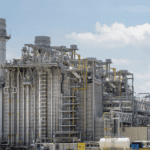The Department of Energy has released a report on current and potential impacts of climate change on the energy sector, including power plants.
The report released on July 16, "U.S. Energy Sector Vulnerabilities to Climate Change and Extreme Weather," examines current and potential future impacts of climate trends on the U.S. energy sector. According to the DOE, researchers have identified several critical issues, including power plant disruptions due to drought and the disruption of fuel supplies during severe storms. They’ve also pinpointed potential opportunities that would make the nation’s energy infrastructure more resilient to these risks.
An interactive map available on the press release page shows how the following three extreme climate trends have had major effects on the energy sector across the country over the past 10 years:
- Increasing air and water temperatures.
- Decreasing water availability across regions and seasons. (See the July POWER cover story, “Water Issues Challenge Power Generators,” for more on this issue.)
- Increasing intensity and frequency of storm events, flooding, and sea level rise.
Among the coverage of particular interest to power generators is a map showing the location of the 100 coal-fired plants most vulnerable to the effects of water stress (most are in the Southeast).
Other highlights from the report include these comments:
- “Climate change has created an increased risk of shutdowns at coal, natural gas and nuclear power plants. Why? Changes in the climate mean decreased water availability—which affects cooling at thermoelectric power plants, a requirement for operation.
- There are also higher risks to energy infrastructure located along the coasts thanks to sea level rise, the increasing intensity of storms, and higher storm surge and flooding.
- Power lines, transformers and electricity distribution systems face increasing risks of physical damage from the hurricanes, storms and wildfires that are growing more frequent and intense.
- Air conditioning costs will rise due to increasing temperatures and heat waves, along with the risks of blackouts and brownouts in regions throughout the country.”
The 84-page report was drafted by the DOE’s Office of Policy and International Affairs and the National Renewable Energy Laboratory.
Sources: POWER, DOE
—Gail Reitenbach, PhD, Editor (@POWERmagazine, @GailReit)
Editors note: This story was originally published on July 16










